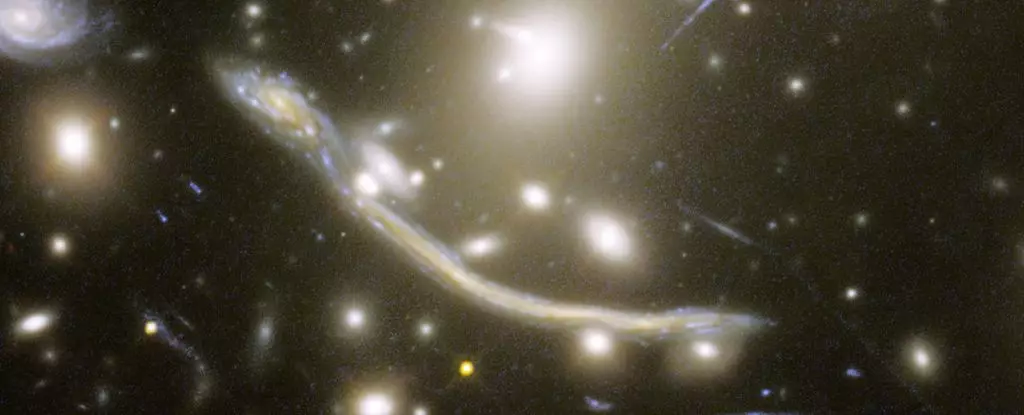The vastness of the Universe poses profound challenges to astronomers, particularly when attempting to study cosmic entities that existed billions of years ago. Typically, astronomers rely on light traveling across expansive distances, yet this light often arrives as a faint whisper of its former glory. Recent advancements, notably the deployment of the James Webb Space Telescope (JWST), are revolutionizing our ability to peer across time and space, revealing a tapestry of celestial wonders. Recent findings show how JWST has unraveled the enigmas of faraway galaxies, allowing the resolution of individual stars previously shrouded in obscurity.
For centuries, astronomers have gazed into the night sky, trying to decipher the functions and structures of distant cosmic formations. Historically, instruments like the Hubble Space Telescope facilitated significant discoveries, but limitations remained. The JWST has come along to expand the horizon of astrophysical study by enabling unprecedented observation capabilities, particularly regarding individual stars within far-flung galaxies.
Fengwu Sun, an astrophysicist at the University of Arizona, emphasizes this leap in capability, highlighting that JWST’s resolution allows scientists to study vast numbers of stars in a galaxy that’s nearly 6.5 billion light-years away. For the first time, the sight of individual stars became a realizable goal, presenting immense potential to deepen our understanding of the cosmic environment. The insights gained from examining these stars contribute significantly to our knowledge of dark matter and the galaxies’ structural composition, compelling us to rewrite textbooks on stellar evolution and galactic dynamics.
The hurdles of stellar observation in distant galaxies often stem from the inherent faintness of these distant bodies. Stars typically exhibit a degree of luminosity that makes them appear as mere points of light at extraordinary distances. However, through the principles of general relativity, light can be bent and magnified around massive celestial objects, creating a phenomenon known as gravitational lensing. This effect allows astronomers to observe galaxies and stars that would otherwise remain elusive.
One captivating example of gravitational lensing can be illustrated by the Dragon Arc, a formation resembling the mythical creature, which is actually a distorted image of a distant spiral galaxy caused by the gravitational pull of a cluster of galaxies called Abell 370. This cosmic lens enables astronomers to not only visualize distant galaxies but also magnify their features, a technique that dramatically enhances the scope of astronomical observations.
In addition to the macro-scale gravitational lensing caused by massive galaxy clusters, an intriguing aspect of star observation comes from microlensing—an effect produced by the gravitational influence of individual stars within a cluster. The nuanced interplay of gravitational forces allows astronomers to detect isolated stars that float amidst the vastness between galaxies.
A collaborative effort led by Yoshinobu Fudamoto from Chiba University exemplifies this phenomenon, as the team resolved a remarkable 44 individual stars from the Dragon Arc using microlensing effects. This finding is groundbreaking, offering a glimpse into the stellar populations of ancient galaxies where previously only a handful of stars could be identified. The revelation that many of these stars are red supergiants—massive, late-stage stars—provides fertile ground for further inquiry into the lifecycle of stars and their contributions to galactic evolution.
As we stand at the dawn of a new era in astrophysics, the significance of JWST’s findings cannot be overstated. By transforming our approach to observing the Universe, JWST opens avenues not merely for identifying stars but for understanding complex astrophysical phenomena, such as the evolution of galaxies and the nature of dark matter. The capacity to observe distant red supergiants, alongside the unique lensing effects, offers insights into stellar formation and lifecycle that were once beyond reach.
The continued examination of distant cosmic structures promises to yield revelations that can inform our understanding of the Universe’s past and its fate. Each observation cements our connection to the cosmos, enhancing one of humanity’s oldest undertakings—understanding our place in the grand tapestry of existence. As we anticipate additional findings from JWST, we remain on the cusp of unlocking further mysteries that illuminate the night sky.

